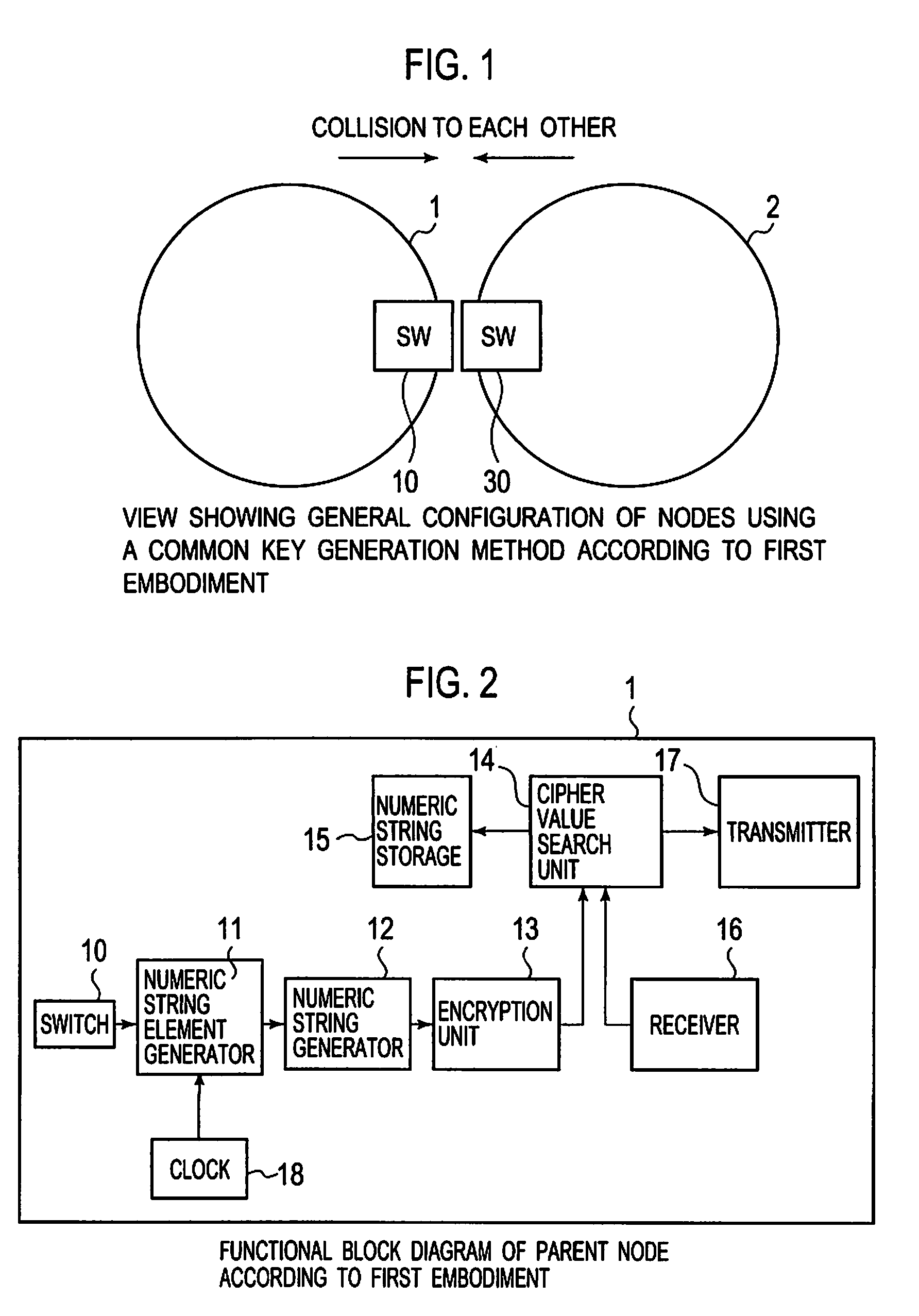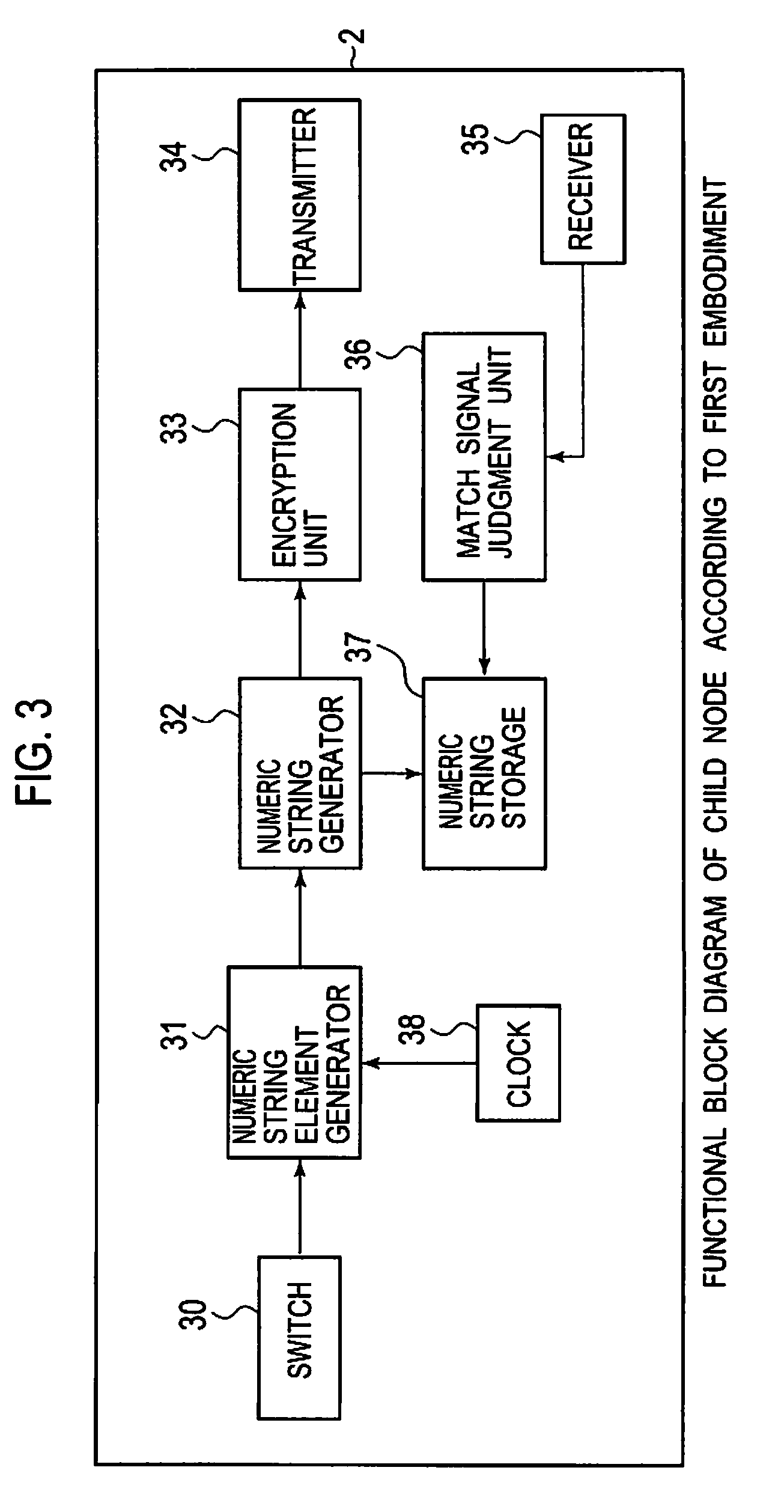Common key generation system, common key generation method and node using the same
a key generation and key technology, applied in the information technology support system, digital transmission, encryption apparatus with shift register/memory, etc., can solve the problem of individual pieces of information detected at each of the nodes being different, and achieve the effect of stably generating
- Summary
- Abstract
- Description
- Claims
- Application Information
AI Technical Summary
Benefits of technology
Problems solved by technology
Method used
Image
Examples
first embodiment
[0031]FIG. 1 is a view showing the general configuration of a node using a common key (i.e. secret key) generation method according to a first embodiment. Nodes 1 and 2 include switches (SW) 10 and 30 exposed to the outside, respectively. By plural collisions of switches 10 and 30 of nodes 1 and 2, nodes 1 and 2 generate shared information based on the time interval between switch-on operations. A process, which will be described later, based on the shared information, is performed to generate a common key. According to the first embodiment, switches 10 and 30 exposed to the outside are used. However, collision detectors may be installed within housings of the nodes to detect the time interval between collisions of the housings.
[0032]Here, the first embodiment is characterized as follows. In some cases, individual portions of sensor information detected by the nodes differ, even in an environment in which the same physical change is detected (e.g., in an environment in which the on-...
second embodiment
[0083]Although the first embodiment uses the time interval value (or the length of time) as original data for basic numeric string generation, the second embodiment uses a time ratio as the original data and further adopts a numeric string element generation rule and a numeric string element substitution rule that are distinct from those for the first embodiment.
[0084]The configurations of parent node 1 and child node 2 according to the second embodiment are the similar to those for the first embodiment. Also, as compared with that shown in FIG. 4, the process flow is different in steps s3 (s23) and s5 (s25) but is the similar in others. Further, the collisions between parent node 1 and child node 2 of the second embodiment are the same as those in the case of the first embodiment.
[0085]Description will be given below with regard to steps s3 (s23) and s5 (s25), which are the process steps that differ from those in the second embodiment from the first embodiment. At step s3, as in th...
PUM
 Login to View More
Login to View More Abstract
Description
Claims
Application Information
 Login to View More
Login to View More - R&D
- Intellectual Property
- Life Sciences
- Materials
- Tech Scout
- Unparalleled Data Quality
- Higher Quality Content
- 60% Fewer Hallucinations
Browse by: Latest US Patents, China's latest patents, Technical Efficacy Thesaurus, Application Domain, Technology Topic, Popular Technical Reports.
© 2025 PatSnap. All rights reserved.Legal|Privacy policy|Modern Slavery Act Transparency Statement|Sitemap|About US| Contact US: help@patsnap.com



